Richard’s “Canada AM” reviews for December 24 with Graham Richardson.
 Richard’s “Canada AM” reviews for “Into the Woods,” “Big Eyes,” “Inherent Vice,” “The Gambler” and “Unbroken.”
Richard’s “Canada AM” reviews for “Into the Woods,” “Big Eyes,” “Inherent Vice,” “The Gambler” and “Unbroken.”
Watch the whole thing HERE!
 Richard’s “Canada AM” reviews for “Into the Woods,” “Big Eyes,” “Inherent Vice,” “The Gambler” and “Unbroken.”
Richard’s “Canada AM” reviews for “Into the Woods,” “Big Eyes,” “Inherent Vice,” “The Gambler” and “Unbroken.”
Watch the whole thing HERE!
 Unique traditions: How Canada AM regulars spend the holidays.
Unique traditions: How Canada AM regulars spend the holidays.Watch the whole thing HERE!
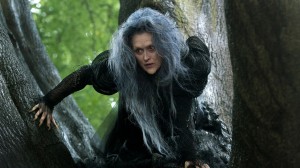 Have you ever heard the saying, “Be careful what you wish for because you just might get it”? It’s a fitting maxim for the new Disneyfied version of Stephen Sondheim’s musical “Into the Woods.” Of course, it is one of the themes of the show, but on another level, for the people who have long hoped to see a screen adaptation of the legendary musical, it may not be a situation of wish fulfillment.
Have you ever heard the saying, “Be careful what you wish for because you just might get it”? It’s a fitting maxim for the new Disneyfied version of Stephen Sondheim’s musical “Into the Woods.” Of course, it is one of the themes of the show, but on another level, for the people who have long hoped to see a screen adaptation of the legendary musical, it may not be a situation of wish fulfillment.
Fans of the stage show will notice a few liberties have been taken with the show’s book. The changes are slight—for instance, the prince does not sleep with the Baker’s Wife, although they do have an encounter—but purists may feel like their beanstalk has been shaken a bit too much.
Casual fans of big screen musical theatre, however, will find a handsomely mounted reworking of the popular show, filled with the stuff of fairy tales: beautiful princesses, handsome but dimwitted princes, witches and even a giant or two.
The story is broken into two halves, a sunnier and irreverent “Once Upon a Time” first half that introduces the Baker (James Corden) and his Wife (Emily Blunt), a couple unable to have children because of a Witch’s (Meryl Streep) curse. The old crone agrees to undo the spell if the pair supply her with four items, a cow as white as milk, a cape as red as blood; hair as yellow as corn and a slipper as pure as gold.
Their search takes them into the woods and in collision (and later in collusion) with Jack (Daniel Huttlestone), later of Beanstalk fame, Little Red Riding Hood (Lilla Crawford) after the Big Bad Wolf (Johnny Depp) has swallowed her whole, Rapunzel (Mackenzie Mauzy) and Cinderella (Anna Kendrick).
The second half, the darker side of the fairy tale world, begins where the happily ever after part usually sits. When a female giant comes to the woods looking for Jack, the boy who killed her husband, the story takes a turn, teaching a lesson about wish fulfillment and responsibility for our actions.
“Into the Woods” has more to do with the original Grimm Brother Fairy Tales—the ones where evil stepmothers sawed the toes off their daughters to fit into golden slippers—than anything Disney has ever attempted before. The stereotypes are all present and accounted for, but under the prince’s brocade jackets or the Witch’s wild mauve wig, are complex characters that veer from comedic to serious to poignant, often in the same scene.
The cast is comprised of actors who can sing, warbling to Sondheim’s rich score. Standouts include “Agony,” an amusing duet between the two princes (Billy Magnussen and Chris Pine) and the Witch’s swansong “Last Midnight.”
On the downside, it feels a bit overlong and the Big Bad Wolf scene could have been renamed the Huge Unctuous Wolf, given Depp’s oily interpretation of the character.
“Into the Woods” survives the script meddling through strong staging, good performances and sheer wish fulfillment to make end up at it’s own kind of happily ever after.
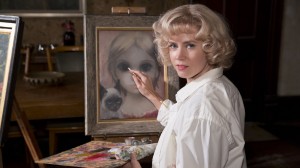 Tim Burton likes strange stories. From the razor sharp fingers of “Edward Scissorhands” to “Pee Wee’s Big Adventure,” he has made his trade on stranger-than-life stories.
Tim Burton likes strange stories. From the razor sharp fingers of “Edward Scissorhands” to “Pee Wee’s Big Adventure,” he has made his trade on stranger-than-life stories.
Now, with “Big Eyes,” starring Amy Adams and Christoph Waltz as Margaret and Walter Keane, he has found a true-life tale that is stranger than fiction.
There was a time when Walter Keane was the top selling painter in the world. Original paintings of his big-eyed waifs commanded thousands of dollars but if that was too high end for you, a print could be purchased for the price of a breakfast at Dennys. And sell they did, like hotcakes. Keane became rich and famous and even though gallery owners, like the one played by Jason Schwartzman in the movie, thought the “taste police” should be called wherever the paintings were displayed and a critic (Terrence Stamp) called them grotesque and “an infinity of kitsch,” the morose portraits were very popular.
“I think what Keane has done is just terrific,” said Andy Warhol. “It has to be good. If it were bad, so many people wouldn’t like it.”
Trouble was, Walter couldn’t paint. He was an artist wannabe with a talent for promotion of other people’s work. In this case it was the work of his wife Margaret. For her the paintings were a personal expression, for him they were a personal cheque to fame and fortune. From selling the paintings at street fairs to the walls of jazz clubs to their own gallery and finally department stores all over the world, Walter became the public face of the phenomenon while Margaret sat at home, tucked away in a small garret cranking out big eyes and keeping her mouth shut.
Eventually Margaret sought out the credit she and share of the money she had rightly earned in a dramatic courtroom battle that was settled with easels and brushes instead of lawyers and writs.
Like Burton’s look at the life of Hollywood hack Ed Wood, “Big Eyes” once again proves that beauty is in the eye of the beholder and sometimes fact is stranger than fiction. The love and generosity Burton slathered on Woods’ eventful life and subpar work is once again on display.
The big-eyed paintings are an acquired taste, a kitschy look at another time when outsider art took center stage but Burton uses them not just as an artifact form another time but to present a story of an artist’s quest for recognition and recompense. It’s a trip back in time to the early to mid Sixties when women’s art was not taken seriously—“Your husband is quite a talent. Do you paint too?” she’s asked—and while we never really learn why the paintings become so popular, we know that through some savvy promotion they did.
What’s more important is the how and why of Margaret’s story. Why did she let her husband steal the spotlight and the money?
That’s the heart of it all and through Waltz’s flamboyant performance as the charmingly vile Walter and Adams’s soulful take on the shy and pliable Margaret we’re given a glimpse into a one-sided and unhealthy relationship with a very public face.
If the eyes are the window to the soul, “Big Eyes” is a skillful, if a little thin look at an artist’s soul and the soulless shark who tried to steal it from her.
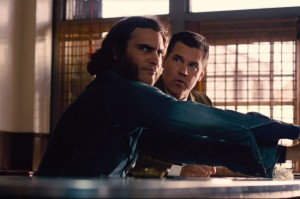 The term “inherent vice” can be found on property insurance policies eliminating coverage for loss “caused by a quality in property that causes it to damage or destroy itself.” In other words, if the chocolate you’re shipping melts, you’re out of luck.
The term “inherent vice” can be found on property insurance policies eliminating coverage for loss “caused by a quality in property that causes it to damage or destroy itself.” In other words, if the chocolate you’re shipping melts, you’re out of luck.
The new film from director Paul Thomas Anderson not only borrows the term as a title, but also the spirit. A complex stoner detective story, the movie’s characters are a doomed lot, debasing themselves with their own behavior. The result is a story of damaged personalities that requires a roadmap to navigate.
Joaquin Phoenix, is Larry “Doc” Sportello, a shaggy haired hippie detective in 1970 Los Angeles. Perpetually stoned he sees the world through a fog, and writes things like, “Paranoia Alert!” and “Not hallucinating” in his red detective’s notebook. When his ex-girlfriend Shasta (Katherine Waterston) asks him to investigate a plot to have her wealthy, married lover committed to a mental health facility, Doc is sucked into a complicated web of deceit involving a neurotic LA cop named Bigfoot (josh Brolin), a snitch (Owen Wilson), a drug crazed dentist (Martin Short), a drug syndicated called the Golden Fang and a man with a swastika tattooed on his face (Keith Jardine).
“Inherent Vice” plays like a brainier Cheech and Chong movie. The rambling story, that makes the work of Alaskan Native storytelling seem linear, sometimes gets lost in a cloud of pot smoke, and is occasionally almost incomprehensible, but never less than compelling. The actors, doing very high-level work, cut through the confusing murk of the plot, putting a human face on the twists and turns of the tale.
It’s been suggested that the mutton-chopped Phoenix based his performance on Leslie Nielsen’s work with the Zucker Brothers. That means playing it straight, or as straight as a stoner can be played. His hard-boiled lingo and natural PI ability are not played for laughs, but every now and again a measure of slapstick works its way into the performance; an unexpected yelp or an eager lunge at a table full of white powder. It’s an audacious performance that rides the line between serious and ridiculous without ever swaying too far one way or the other.
Your appreciation of Phoenix’s work, or at least the essence of the work, will relate directly to your enjoyment of “Inherent Vice.” The wonky tone, spread throughout the movie’s 148 minute running time, feels like an extended joke the audience isn’t always in on. When it works, it hums along, like a strange but enjoyable dream. When it doesn’t, it’s nightmarishly incoherent.
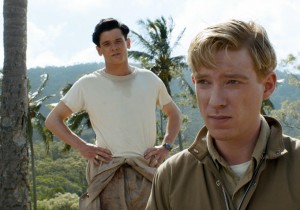 “Unbroken” might better have been titled “Triumph of the Human Spirit®,” or “Resilience!: What Doesn’t Kill You Only Makes You Stronger.” The life story of Louis “Louie” Zamperini (Jack O’Connell) is a case study in conquering adversity—this guy packed more hardship into his years than most of us could in three lifetimes—but the resulting film plays more like a hagiography than a Hollywood biopic.
“Unbroken” might better have been titled “Triumph of the Human Spirit®,” or “Resilience!: What Doesn’t Kill You Only Makes You Stronger.” The life story of Louis “Louie” Zamperini (Jack O’Connell) is a case study in conquering adversity—this guy packed more hardship into his years than most of us could in three lifetimes—but the resulting film plays more like a hagiography than a Hollywood biopic.
Adapted from Laura Hillenbrand’s book and directed and produced by Angelina Jolie, this is at the indomitable spirit of look at Zamperini, a first generation Italian-American Olympian runner who survived a near-fatal WWII plane crash and 47 days drifting on a raft with airmen Phil (Domhnall Gleeson) and Mac (Finn Wittrock). On their last day adrift he says to his raft mate, “I have some good news and bad news.” The good news is rescue, the bad news is the rescuers, the Japanese who promptly throw him in a prisoner of war camp.
Years of physical and mental abuse follow at the hand of a brutal camp commander known as The Bird (Miyavi) before he finally emerges bloodied and bruised but unbroken, (that’s not a spoiler, just a fact), on VJ Day.
Jolie has made a handsome movie unafraid to get down and dirty in its depiction of the suffering and indignities faced by Zamperini, but for all the skill she displays in staging the scenes, there seems to be a lack of real emotion behind the camera. Star O’Connell is raw, physically and mentally, throughout but despite the cruelty on display the movie is oddly bloodless. It’s a movie and a story that you’ll admire but may not be swept away by.
Perhaps it’s because other than a few scenes early on where Zamperini is encouraged to do his best by his brother (Alex Russell) and beaten by his father, we never get a real sense of where this incredible fortitude comes from. His spirit may be unbreakable but our sense of why we should be as moved as the movie would like us to be isn’t as shatterproof.
As well intentioned—and patriotic and high minded and valorous—as Jolie’s presentation of “Unbroken” is, it falls short on this one, very major, aspect of the story.
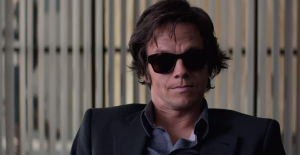 In Mark Wahlberg’s updated version of “The Gambler,” the unrelenting grimness of the 1974 original has been replaced with unrelenting grimness brush with a dab of Hollywood hopefulness.
In Mark Wahlberg’s updated version of “The Gambler,” the unrelenting grimness of the 1974 original has been replaced with unrelenting grimness brush with a dab of Hollywood hopefulness.
University English professor Jim Bennett (Wahlberg) is an all or nothing guy. He gave up writing after his critically acclaimed novel failed to light the literary world on fire. “Unless you’re a genius,” he says, “don’t bother.” If you can’t be the best, don’t bother. Why bet some of your money when you can bet it all. That attitude is exactly what gets I him into trouble, setting him on an journey that will cross paths with vicious loan sharks, gambling barons and two students who may or may not be able to help him as he scrambles to pay off a $240,000 debt to some very bad people in just seven days.
“The Gambler” plays like a throwback to the golden age of gritty American drama but blunts the seedy 1970s feel with an ending that pushes past the point of existential dread (VERY MILD SPOILER ALERT) and betrays the movie’s central theme—the dark examination of the life of a man with nothing to live for.
(CAREFUL! ANOTHER VERY MILD SPOILER ALERT!) I won’t say anymore about the film’s final reel, other than to note that if it ended five minutes before it does, with a spinning roulette wheel, the movie would be something you’d be arguing about over a drink in a seedy bar afterwards. As it is, it’s more of a Starbucks frappuccino flick.
Up until that point though, it’s a pretty good study of a man out of control. Unable to curb his appetite for gambling Bennett brings his motto of, “Total victory or death,” into the real world when he has a spectacularly bad night at an illegal gambling club, loses a fortune and puts himself in hock. With no regard for his safety or future he plunges deeper and deeper into the dark side. When the movie sticks to he soft underbelly of the story, it is effective.
The gambling and the money search scenes work, unfortunately the existential English professor routine, which eats up a good chunk of the film’s middle section, doesn’t. Bennett schools his students on the vagaries of life, literature and love but it sounds like barroom bravado sifted through an eloquent filter. The while the words spill out of Wahlberg’s mouth easily, but they sound hollow.
Some of Bennett’s situational angst is airy—his dialogue, while overblown, is often poetic—but much of it is too on the nose—a choir sings Radiohead’s “Creep” during an unpleasant confrontation with his star pupil and sorta-kinda love interest Amy (Brie Larson)—as if director Rupert Wyatt doesn’t trust the audience to understand what’s going on in the scene.
On the seedy side of things, John Goodman as a loan shark who asks Bennett if having all the advantages life could offer up—birth, good looks, moneyed family, education etc—has been such a burden to him, knocks it out of the park. He’s almost like a Shakespearean tough guy in his tone and demeanor and the rich dialogue sounds natural tumbling from his lips. Ditto Michael K. Williams as a violent money lender named Neville, who would like nothing more than to rid himself of “low company.”
“The Gambler” wants to be a philosophical look at life’s big issues, using Bennett’s fall from grace as a backdrop, but in the end delivers Hollywood cynicism.
 Richard and CP24’s Stephen LeDrew talk about the year’s biggest entertainment stories and announce “The Interview” screenings! Watch the whole thing HERE!
Richard and CP24’s Stephen LeDrew talk about the year’s biggest entertainment stories and announce “The Interview” screenings! Watch the whole thing HERE!
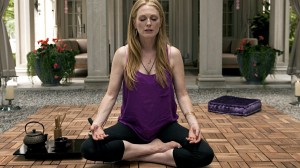 Read Richard quoted in a recent Canadian Press article by Victoria Ahearn!
Read Richard quoted in a recent Canadian Press article by Victoria Ahearn!
“As film critic Richard Crouse puts it, the definition of what it is to be a movie star has changed in the social media age. Some major celebrities are no longer the big box-office draws they used to be and they’ve had to put more effort into the promotional circuit, such as late-night TV appearances.
“It used to be that you’d announce a Tom Cruise movie and people would be lined up around the block to see it, and that no longer holds true unless the movie happens to be called ‘Mission: Impossible’ and then people will go see it with him in it,” says Crouse, a journalist and author who has two syndicated weekly columns in the Metro newspaper and a syndicated Saturday afternoon radio show on Newstalk 1010 in Toronto…” Read the whole thing HERE!